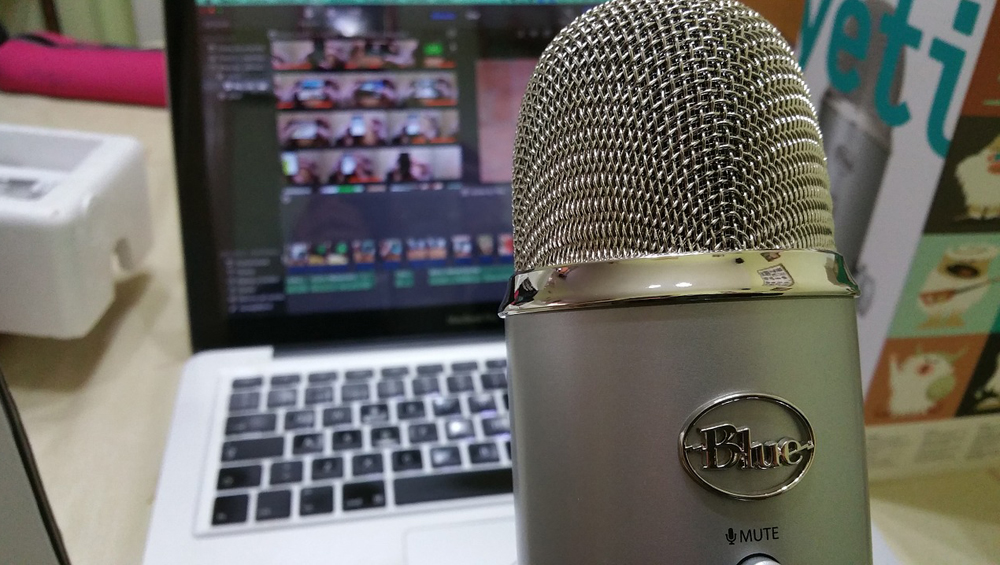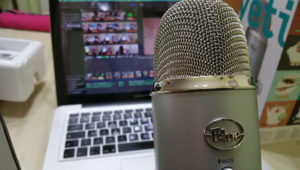
Stations Finding Sound Reasons To Podcast

 When KVUE-TV Austin, Texas, first began covering the horrifying series of bombs that ripped through the city last year, it was the start of a huge news story that might have happened anywhere. So after the station created a podcast, Bomber, in March, the story of the 19-day hunt for the serial bomber deeply resonated both in Texas, as well as nationally.
When KVUE-TV Austin, Texas, first began covering the horrifying series of bombs that ripped through the city last year, it was the start of a huge news story that might have happened anywhere. So after the station created a podcast, Bomber, in March, the story of the 19-day hunt for the serial bomber deeply resonated both in Texas, as well as nationally.
It ended up on iTunes Top 100 podcast list and became the first indication of a larger effort within Tegna, KVUE’s owner. The company has a new mandate: create eight to 12 podcasts annually, with the potential to ramp up significantly beyond that. Housed within a new Tegna unit, Vault, the Tegna podcasts are focusing specifically on the true crime cases that its 49 stations have covered over the years.
E.W. Scripps has a similar agenda. “One thing we plan to leverage moving forward are these great investigative stories that are either done by the [Washington, D.C.] bureau or local markets,” said Laura Tomlin, Scripps SVP of national media. “It’s a great place for us to leverage the work we’ve done here at Scripps for many years.”
Scripps already scored with Sold in America, a 2018 podcast that was spearheaded by Scripps’ Washington news bureau and produced by Scripps’ Stitcher podcast unit. The podcast’s serialized report on the sex-trade industry reached Apple’s Top 10 podcast list and picked up a Gracie award last month.
“When you look at what’s popular in podcasting, in terms of what people are downloading, about one-third of the top 50 podcasts are in the true crime genre,” said Adam Ostrow, Tegna’s chief digital officer.
Tegna and Scripps aren’t the only station groups that have picked up the podcast mic.
The Fox O&Os have been partcularly active in the space, producing a wide variety of podcasts in New York, Los Angeles, Chicago, Washington, Detroit and Dallas. At flagship WNYW, reporter Dan Bowens has streamed more than a dozen about unsolved crimes in New York. Four of them have been repurposed as TV stories.
Tribune Broadcasting’s stations are intent on producing some 100 podcasts in 2019, in a variety of different genres. Early this year, the company created a new unit for them, Tribune Audio Network, and partnered with the audio content and advertising platform Art19.
And Graham Media is actively talking with advertisers about creating branded podcasts that tout the companies’ products and services, much like Trader Joe’s has done with its Inside Trader Joe’s podcast.
It’s easy to see why the station activity is starting to build. A study from the Interactive Advertising Bureau and PricewaterhouseCoopers puts podcast ad revenues at $313.9 million in 2017, and projects that it will more than double, to $659 million, by next year.
Edison Research released a new study in March showing that 51% of Americans aged 12 or older have listened to podcasts. One-third of the respondents said they’d listened to a podcast in the last month, representing 90 million monthly listeners.
It’s a glass half empty or half full situation, according to Fred Jacobs, president of the consultancy Jacobs Media. “The reality is, half the population has never listened to a podcast before. Is it a mainstream platform? I don’t think it is.”
Jacobs notes that podcasters face the challenge of getting their work noticed, given what he calls the “flea market” of over 700,000 podcasts available. What’s more, measurement of podcast audiences is lacking. It’s far less granular than it is for other forms of digital media. And successfully monetizing podcasts is a work-in-progress for many. Moving from largely a direct-response advertiser base to mainstream brands is key to that.
“There are certainly people who are making money. For others it’s an uphill battle,” said Will Johnson, Tegna’s executive producer of audio and podcasting. Success is likely “when you have the brand that we have and an extensive number of stations and reporters, and a promotional arm that can really lift the focus of what we’re doing.”
Even station groups without national reach can find success. Take, for example, Shattered, a podcast from Graham Media Group’s WDIV Detroit. Shattered scored a Sony Pictures sponsorship in its second season, which chronicled the life of FBI informant White Boy Rick. It emerged around the same time as Sony’s Matthew McConaughey-starring movie White Boy Rick. All told, Shattered attracted more than 2.2 million downloads for the first three seasons.
“We are encouraging stations to experiment with podcasting. But we don’t want to take limited resources and put it against something where it can become a time-consuming effort,” said Catherine Badalamente, VP of digital media at Graham. “We’re trying to figure out how we can do this smarter, quite frankly.”
Badalamente explained: “It’s hard to build a sustained audience that you can monetize.”
That’s where the branded content podcasts for advertisers come in. Badalamente’s hope is that they will help to cover the costs of its station podcast efforts.
There’s a reason why a large quantity of podcast advertisers fall into the direct response category: metrics. “There’s nowhere near enough data to make rational buying decisions the way you can with TV time or radio time,” said Jacobs. “Nobody knows, when somebody downloads a podcast, if they listen to it, or whether they listen to all of it. We don’t have that time-spent listening information.”
Research companies are stepping up their podcast game. For example, Nielsen is planning to release the Scarborough Podcast Listener Buyer reports, which will provide podcasters with info on how their listeners index with certain ad categories or with specific brands.
Edison also recently introduced its Podcast Consumer Quarterly Tracking Report, which tracks reach, awareness, demographics and content preferences, among other metrics.
Despite the metrics issue, “larger brands are doing more recently,” said Scripps’ Tomlin, noting that Procter & Gamble, Coca-Cola, Chrysler, Microsoft, Google and Facebook have joined podcast the fold. “What they’re finding is that audiences are highly engaged. I think they’re doing their own measurement, by doing brand-lift studies.”
“There is an enchantment right now among savvy marketers that are looking to be more intimately engaged with consumers,” explained Tim Hanlon, CEO of the The Vertere Group media consultancy. “Once a marketer is locked into the passion of a listener, it’s a very powerful medium. It belies scale.”
“Today all categories of brand advertisers are, minimally, experimenting in the audio-on-demand space,” said Kerry Oslund, VP of strategy and business development at Tribune. “When we talk to those that have been monetizing podcast networks longer than we have, which is almost everyone, they tell us the bulk of the money is coming from radio agencies.” Given that, Tribune is looking to steal share from radio, including local radio, he said.
Tribune stations have already produced 50 podcasts in 2019, well on their way to the goal of 100, said Jason Ball, VP of content development at Tribune as well as a VP and news director at KTLA Los Angeles. That station has created six podcasts.
Ball sees podcasts as more than a revenue play. It’s also about connecting to audiences in a different way. He notes that the most successful KTLA podcast so far features the morning news anchor Frank Buckley, called Frank Buckley Interviews.
“It gives our viewers a chance to see Frank in a different light and spend a little more time with him. And that supports the TV [broadcasts],” he said. “The challenge — and I don’t know who’s going to solve this problem — is discovery and figuring out what listeners are interested in. That’s going to be the next phase.”


































Comments (0)